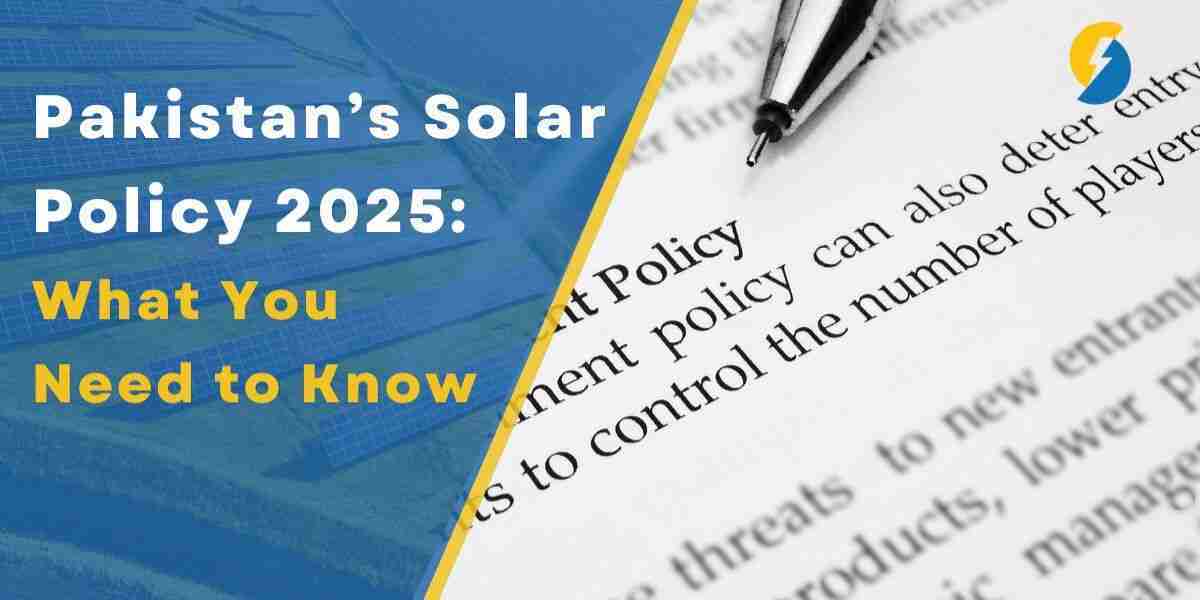In recent years, solar energy has emerged as a powerful solution to Pakistan’s growing electricity needs. With the introduction of the updated and ambitious solar framework, the government aims to promote cleaner energy while reshaping the landscape for both residential and commercial consumers. The latest changes under the new Pakistan’s Solar Policy 2025 have brought both opportunities and challenges to the forefront.
☀️ Key Highlights of the 2025 Solar Policy
Shift from Net Metering to Net Billing
One of the most significant updates in the 2025 solar policy is the transition from net metering to net billing. Previously, consumers who generated surplus solar energy could sell it back to the grid at the same rate as they purchased electricity. Under the new net billing model, that rate has been considerably reduced—now buyers will get paid around PKR 10 per kWh instead of PKR 27. While this move is designed to reduce financial strain on DISCOs (Distribution Companies), it’s also raising concerns among current and future solar users.Capping Solar Installations
Consumers are now restricted to installing solar capacity up to 10% above their sanctioned load. This is a sharp decrease from the previous 50% margin. The limitation may discourage large-scale installations, especially for households aiming to become fully energy independent.Focus on Energy Equity
The Pakistan’s Solar Policy 2025 places emphasis on providing solar energy to underserved communities. For instance, the Khyber Pakhtunkhwa government has launched the KP Solar Scheme, offering free solar panels to over 130,000 low-income residents in high-temperature zones.
? Impact on Households and Businesses
While solar energy adoption has soared among affluent homes and large businesses, many middle-class consumers are feeling left behind. Factors like limited rooftop space, upfront installation costs, and lack of financing options have created barriers. Additionally, with the revised policy, solar panel owners may find it harder to recoup their investments as quickly as before.
? Investor Concerns
Changes in the policy have raised red flags for international investors. Organizations like the World Bank and the International Finance Corporation have expressed unease over the abrupt shift in solar regulations. Their main concern is the undermining of contractual trust, which could discourage future investments in Pakistan’s renewable sector.
? Looking Ahead: Sustainable Growth or Setback?
Despite these policy shifts, Pakistan’s solar power capacity is expected to continue its upward trajectory. From 1.3 GW in 2023, it surged to over 4.1 GW by late 2024. As global climate concerns grow, Pakistan must ensure that its energy policies remain investment-friendly while addressing the challenges of affordability and accessibility.
? Conclusion
The Pakistan’s Solar Policy 2025 is a double-edged sword—on one hand, it seeks to stabilize the grid and reduce the burden on distribution companies, but on the other, it risks slowing down the widespread adoption of solar power. The government must find a middle ground that encourages innovation, protects consumers, and builds investor confidence. As the world pivots to clean energy, Pakistan’s long-term commitment to solar will play a crucial role in ensuring energy independence and sustainability.
? Explore the full policy guide here: Pakistan’s Solar Policy 2025








